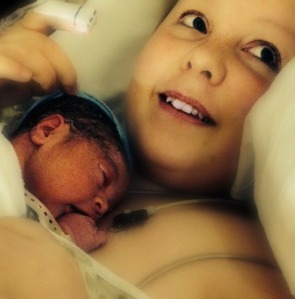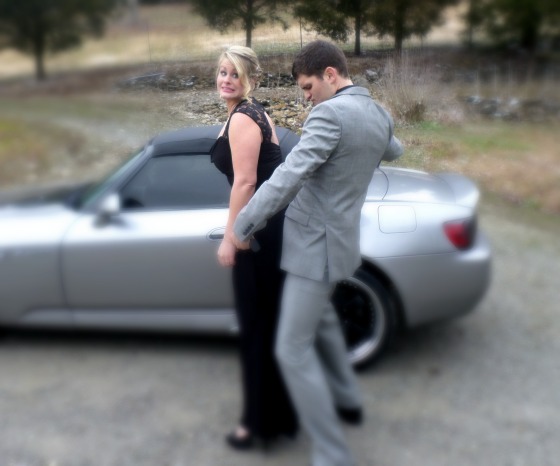Heather Niewadomski
English 102
Professor Faherty
February, 2014
The Combination for Better Health
Little did I know, back in the spring of 2011, when I decided to change my eating habits to try and lose extra weight, that not only would I be embarking on an intricate journey to learn all about good nutrition and proper digestion, I would also begin an experience with my husband that would forever change my life. I’m talking about an experience that would educate me far beyond what I had intended to discover. As I sought enlightenment in one direction, I was pulled into a world of research that involved learning all about the specific process of digesting food and the role that the body’s major internal organs played in reaching “good health.” I could never have imagined that in just 5 short months, I would face the reality of my husband receiving a medical diagnosis that would put him in the grave exactly 10 months later.
Not to get ahead of myself, for there is much to tell. Yet this is not about my personal history, this is a research paper for a college writing class (although I will refer to my personal experiences and the things I learned). When I opened the instructions for the paper I was assigned to write, the title literally jumped off the page at me. FOOD FIGHT! I was to write this paper on a food related issue. I told myself I could write about restaurants, I could write about a favorite recipe, how my mother taught me to cook, or perhaps America’s obsession with fast food. There are so many avenues to travel down on this broad topic, but narrowing it down to my chosen topic was inevitable considering what I had been through with my husband and the wealth of knowledge we gained as we researched proper food combining for efficient digestion, the amount of toxicity found in our food and the amount of food that people consume in proportion to their actual need. What we discovered was… not only do people fight about food, but your food is fighting with you! It may be hard to imagine how one’s food could be fighting with them. Most people equate food with a very sensual and pleasurable picture of sheer enjoyment. Perhaps for the tongue alone and ultimately, that full feeling in your tummy once it has been satisfied. The rest of the body has a very different view of the food it is fed, from your small intestines to your over-taxed liver, your poor gall bladder, (if you still have one) your weakened kidneys and a dehydrated circulatory system. All of these conditions can be attributed to lack of proper digestion and when your digestion is inhibited; your food is fighting with you! Improving the quality of the foods we eat is very important but achieving efficient digestion is a major key to better health.
You may be thinking something along the lines of this: “My food does not fight with me! We have a beautiful love affair and I like it that way!” Who wants to have their food choices and eating habits put under a microscope? People just want to enjoy eating! This is quite understandable…. but I am not talking about the pleasurable sensations of taste alone. I am addressing the topic of digestion, plain and simple. This is a topic that must be considered for the health-conscious eater. People rarely consider the process a body goes through when they put food into their mouths. The very first step in converting the food that is eaten into usable energy (by way of nutrients from food) is begun in the mouth where all those wonderful pleasure sensations take place. Once the stomach is satisfied and hunger has been abated, how many eaters stop to ponder the work involved to finish the digestion process? Perhaps if someone gets a stomach ache, (“Oh! I ate too much!” *again*) or if someone suffers from heartburn, then and only then is any thought given to the rest of the internal organs and the process of digestion. The truth is, our bodies work like a very precise machine, every organ and system laboring together to accomplish a common goal that is the most important function of the body. Without food and water, there would be no body! When you take in food, the very first priority of the human body is to begin the process of digestion. No matter what else is going on in your body, the brain sends out the ‘red alert’ signal that it must give top priority to breaking down and processing the nutrition that has been taken in. Ah, but here is where the controversy comes in. Have you taken in any ‘nutrition’? This argument is not going to be about what we consider to be ‘healthy’ food. I think everyone knows what good food is and what bad food is and the difference between the two. I would like to focus on the act of digestion and the process of how your food is fighting with your body even when (what one considers to be) healthy food is taken in. People can think they are making great food choices, and maybe they are, but there is more to digestion than eating the right food.
It matters much how we combine the foods we eat and the times we choose to eat them. Food combining refers to combinations of foods that are compatible with each other in their digestive chemistry. We all may have learned some of the basics in school. Proteins, carbohydrates, fats, sugars, etc. All of these have their own chemical makeup and require different enzymes and digestive juices to process so your hard-working body can turn food into usable energy. When we mix up any old combination of food groups and especially any combination of toxic, additive-laden, processed ‘food product’; it’s a recipe for a food fight, indeed! Dennis Nelson lays it all out in a very basic and simplified version of a complex topic. His 64 page booklet, Food Combining Simplified, caught my eye at the health-food store during a time when I was seeking to improve my diet in hopes of losing weight. What I learned about food combining would also be invaluable to my husband as he struggled with a failing liver in the months before he passed. We were seeking every way possible to make the digestion process (for us both) as easy as possible. Proper food combining is the best way to make digestion smooth and easy and get the most from your food while not over-taxing your organs as well as avoiding extra fat storage. Although there are other factors that can hinder good digestion, we learned that bad foods and poor combinations of good food are the major culprit of a sluggish and unhealthy digestive system. Much of what Dennis Nelson includes in his booklet is a simplified version of the same subjects covered in Food Combining Made Easy by Herbert M. Shelton. In his 1951 publication of this basic principle of the workings of Mother Nature, Shelton brings to light how that,
The Human digestive tract was not designed by nature to digest complex meals. Seven
course meals and twenty-one course dinners were not in nature’s plan when she
designed the human digestive tract. The man who sits down to a dining table that is
burdened with a great variety of foods and eats everything from “soup to nuts,” is sure
to suffer with indigestion. If he makes a habit of eating complex meals and disregarding
his enzymic limitations, as is customary, his abdominal distress will be chronic.
(Herbert Shelton 8).
If the symptoms of immediate indigestion, stomach ache or acid reflux are not present with some, then chances are the results of a poor diet are showing up in obesity, fatigue, poor sleeping patterns, dull skin tone, lack of energy….and the list goes on. Few people understand the benefits of proper food combining resulting in accelerated digestion simply because they have nothing to compare it to. My husband and I both discovered the very first benefit to proper food combining was more energy and better sleep patterns along with a clearer thought process. It was kind of like being able to hear someone speak and understand what they were saying for the first time because the neighbors turned down their blasting stereo equipment next door! We both experienced enhanced abilities in our bodies as we cleaned up our food choices and ate proper combinations of foods that were compatible with one another. As our bodies began to assimilate good nutrition from whole foods, unhindered by the usual barrage of bad foods and improper combinations, we experienced more energy, better sleep patterns, less inclination to snack between meals and an enthusiastic desire to feed ourselves cleaner and healthier food. Getting rid of the junk load of chemicals and additives and heavy salts, preservatives and food coloring, all those ingredients found on the labels of food products (that you can’t even pronounce!) allowed us to appreciate the way our bodies were designed to operate; smoothly, efficiently and peacefully! Our entire persons were affected by the change, meaning mind, body and spirit. It was something we really needed at the time as we both prepared for the task ahead.
Few people want to debate the foods they should and should not eat. No one wants their diet restricted and their food choices limited. Consumers want what tastes good and they want it now and in large quantities! Most people argue that eating should simply be a pleasurable experience. Many people even argue that you’re going to die anyway, why not enjoy yourself while you can? I would like to agree but my conscience was telling me otherwise. As my husband and I forged ahead in our quest for better health, we found ourselves at the Whole Foods Market just as often as we could get there. Funds were tight, but every spare dime went to natural health foods and raw, whole fruits and vegetables. I’d scan the book section and wish I had the money to pick up a copy of every health-related book I thumbed through. We wanted a comprehensive resource as we studied foods and their affects on the body. We wanted to know what foods would best help my husband so his liver would not have to work so hard. I came across Bragg’s Healthy Lifestyle, Vital Living to 120. The sub-title caught my eye; Body Purification, Toxicless Diet & Healing System. That said it all to me. In the words of Patricia Bragg, “The chief reason Americans need so much bowel “dynamite” is because they eat so much refined, mushy, lifeless, unnatural and empty-calorie foods” (Bragg 101). Of course we were already aware of the poor quality of the typical American diet, but Patricia Bragg was able to say it in a way that made us feel motivated to learn about what was best for the human body. She went on to say, “Most diets consist of too many over-cooked, mushy, fast foods that lack the tough cellulose fibers of raw vegetables that act as helpful, tiny intestinal brooms to give mobility, bulk, moisture and lubrication to the colon” (Bragg 101). There we are, going right back to the topic of digestion! People in today’s society are so far from understanding what a healthy diet is and how vital it is for good digestion. Gone are the days when Grandmother prepared a home-cooked meal that included a fresh salad and plenty of vegetables. The lifestyle we 21st century humans live dictates speed and convenience. Even the fast-food industry is aware of the importance of raw vegetables as you see them, more and more, trying to offer a healthy salad on their menu along with all the other junk they serve up. The more we looked into the subject of digestion, the more information we found about the key to accomplishing healthy, optimal digestion, namely, raw whole fruits and vegetables. The more we incorporated real food into our daily menus, the less we desired the chemical-laden food products offered in all the fancy packages with the myriad list of ‘ingredients’ that made these foods ‘tasty’. We practiced the food combinations suggested in all the books we referenced. The number one tip we came across was never to mix hard-to-digest proteins with starchy carbohydrates. This made for a mix that thwarted the efficiency of the digestion process. Paul Pitchford explains what happens when “many different ingredients are eaten at the same meal” in his comprehensive digest, Healing with Whole Foods. According to Pitchford, “…the body becomes confused and is not able to manufacture all of the necessary enzymes simultaneously” (Healing with Whole Foods 260). This certainly shook up the traditional meals for us. Consider all the favorites that combine meat proteins with starches! Spaghetti and meatballs, eggs and grits, chicken and dumplings, pork and noodles, pizza and lasagna that have meat and cheese, turkey with mashed potatoes and gravy, meatloaf with potatoes, steak and potatoes….the list just goes on and on. No wonder America has a weight problem! We discovered that these sorts of combinations were the hardest to digest and the hardest on the body. Despite that comfortable, full feeling obtained after such meals, there were also the times when over indulging reminded us that consuming such combinations ultimately weighed us down and brought on the familiar ‘food coma’ as we often called it. We learned to appreciate the work the digestive system had to do and we sought to help it rather than hinder it. We were onto something real and for me, the weight began to come off, and for my husband, his suffering was greatly reduced even though his disease was progressing.
The time of day that food is taken in, the portion size of food being consumed as well as an optimal “stop eating” or cut off time for the day are also crucial to optimal digestion. I must admit, this was one of the harder things to adjust to or even follow. I am with most people, “First you tell me what to eat and now you’re going to tell me how much of it I can eat and when I can or cannot eat it?” Granted, many people will be open to incorporate healthy food and some even will give up un-healthy food, but seldom will these same people allow restrictions on portion sizes and when they eat. I also struggled with such rules, but there was hope for me and a light at the end of the tunnel.
Exercise is the second biggest factor in achieving good health and hastening the process of efficient digestion. Every source I have ever delved into on the subject of whole foods, proper food combinations, raw food living and good digestion had just as much to say about regular exercise as they had to say about digestion. The Braggs advocate a consistent regimen of daily exercise first thing in the morning, especially before eating. Patricia Bragg urges the reader to “earn your food!” Paul Pitchford asserts that, according to ancient Eastern traditions, activity is the second (after awareness) priority in healing the body. He tells us that, “According to the East Asian healing arts, exercise builds digestive fire and therefore is necessary for us to receive good nutrition from our food. Without sufficient activity, we may find it difficult to make progress in health, regardless of how good our food may be” (Healing with Whole Foods 25). I was able to incorporate plenty of daily exercise into my routine, despite my increasing duties of caring for my ailing husband. As I supported him and nursed him during his greatest hour of need, he reached out to me right from his recliner and encouraged me as I did daily calisthenics right in the house and also took long morning walks out in the woods. I found the exercise to be such a vital part of not only improving my digestion and contributing to weight loss but it was the number one way I was able to deal with the stress of getting ready to lose my beloved partner of 31 years. It was like somehow, the Good Lord knew just how strong I would need to be at this time in my life and the doors had swung wide open for me to be ready to face the challenge.
Making an argument about healthy food is not very difficult. Most people understand what healthy food is. There is so much more to good health than what I have touched on here, but it’s easy to see how the foods we eat are what build a body and keep us alive. That vital intake is hardly usable unless our bodies can break it down, process it and digest it for the regeneration of all our organs and tissues. Choosing healthy, whole foods is important and eating them in the right combinations, at the right time of day is even better if you want to be at your best possible health. The lessons I learned have stuck with me even though I am not as consistent in keeping the good habit of proper food combining since my husband passed. I know what is best for my body and I have experienced the benefits first hand. I’m a living witness to the success of practicing the principles set forth from the authors I have mentioned in this paper, yet humanity dictates that we all be overcome by temptation from time to time. Writing this paper has reminded me of some very important things and that maybe it’s time I get back to the place of practicing these good habits so I can once again enjoy the benefits of good digestion. I’ve experienced so many changes since losing my beloved two years ago and discovered some really bad combinations within widowhood. A combination to better health through good digestion and proper food combining would be a welcome change in the path I have been walking lately!
Works Cited
Bragg, Paul Chappuis, and Patricia Bragg. Bragg Healthy Lifestyle Vital Living to 120.
33rd ed. Santa Barbara, Calif.: Health Science, 2004. 101-106. Print.
Nelson, Dennis, and Pamela Cohn. Food Combining Simplified: how to get the most from your
food. 3rd rev. ed. Santa Cruz, CA (P.O. Box 2302, Santa Cruz 95063): D. Nelson], 1988.
Print.
Pitchford, Paul. Healing With Whole Foods: Asian traditions and modern nutrition. 3rd ed.
Berkeley, Calif.: North Atlantic Books, 2002. Print.
Shelton, Herbert M. Food Combining Made Easy. Summertown, Tenn.: Book Pub. Co. 2012.
Print.












